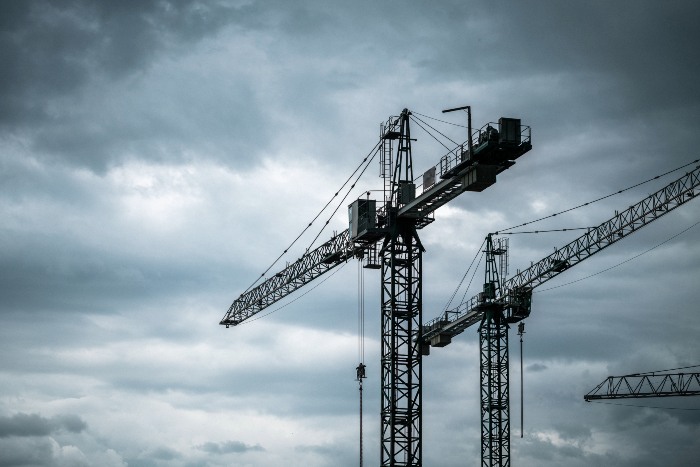Learn the Types of Construction Cranes
Are you looking to learn about the types of construction cranes you could use for your project? Crane Rental Now in Gambrills, MD, is here to help! Cranes are the backbone of modern construction projects, enabling the lifting and moving of heavy materials with precision and efficiency. From towering skyscrapers to sprawling bridges, cranes play a vital role in shaping our world. But what types of cranes are available, and how do you choose the right one for your project? This guide explores the types of construction cranes used in the industry, their unique features, and how to decide which is best suited for your needs.
Why Are Cranes Essential in Construction?
Cranes provide solutions for heavy lifting, precision movement, and efficient material handling in construction projects. They contribute to safer worksites, quicker project completion times, and cost-saving efficiency. Here’s why cranes are essential components of construction projects:
- Heavy Lifting Power: Cranes can handle loads that would otherwise be impossible to lift manually or with basic machinery.
- Versatility: Different construction cranes are tailored to meet project-specific needs, whether a high-rise building or a bridge over water.
- Safety Improvement: By reducing manual labor, they help minimize workplace accidents.
- Enhanced Speed and Efficiency: Cranes streamline operations, allowing projects to stay on track or finish ahead of schedule.
Types of Cranes for Construction
Understanding the different types of construction cranes is crucial to selecting the right equipment for your project. Here are the most used cranes in construction and what sets them apart:
- Tower Cranes: Tower cranes are the giants of the construction world. They are commonly used in building skyscrapers and large-scale projects. Fixed to the ground or a structure, these cranes have a long horizontal jib, allowing them to lift and move heavy materials at impressive heights.
- Mobile Cranes: Mobile cranes are versatile and easy to transport, making them a go-to choice for various projects. Mounted on wheels or trucks, they offer flexibility and quick setup, making them ideal for small- to medium-sized projects requiring on-the-go lifting.
- Crawler Cranes: Crawler cranes are designed for sites with uneven terrain and challenging conditions. Equipped with tracks instead of wheels, these cranes provide excellent stability and impressive load capacity, making them ideal for heavy industrial projects and operations on rough terrain.
- Overhead Cranes: Ideal for indoor use, overhead cranes are commonly utilized in factories and warehouses. They operate on a fixed track, allowing them to efficiently move materials along horizontal and vertical axes, making them perfect for confined indoor spaces.
- Hydraulic Cranes: Hydraulic cranes utilize advanced hydraulic systems to enhance power and efficiency. They are compact yet capable of lifting hefty loads with minimal effort, making them ideal for quick setups and tasks requiring substantial lifting power.
- Floating Cranes: Floating cranes are specialized cranes used for projects over or near water. Positioned on barges, they offer stability and strength, making them ideal for bridge construction, port construction, and offshore work.
Key Considerations for Choosing the Right Crane
Several factors should guide your decision when selecting the right type of crane for construction. Every version has its pros and cons based on your needs. Here are the factors to consider:
- Project Requirements: Consider the materials and weights to be lifted.
- Site Conditions: Assess terrain or whether the site is on water, indoors, or at height.
- Budget: Factor in rental and operational costs.
- Space Constraints: Ensure the crane can effectively operate within the available space.
- Mobility: Determine whether a fixed or mobile crane better suits your project.
Advantages of Using Cranes in Construction
Cranes provide undeniable value to construction projects. Each type carries its purpose. Here are some of the key advantages to consider when choosing the best one for you:
- Efficiency: Reduces manual work while speeding up material handling.
- Precision: Allows for safe and accurate placement of materials.
- Cost-effectiveness: Lowers the cost of workforce and time.
- Adaptability: Different crane types fulfill specific construction needs.
Challenges in Using Cranes
Though cranes offer numerous benefits, there are challenges to their use. When renting the right one, things to consider involve looking at your budget, who will be controlling it, and how much maintenance you’re willing to invest. Here are the following elements to consider:
- Initial Cost: Purchasing or renting cranes can be expensive.
- Skilled Operators: Finding and retaining certified crane operators can be a challenge.
- Maintenance: Regular upkeep is essential to ensure safety and efficiency.
- Weather Dependency: Operations can be halted in bad weather conditions like high winds.
Future Trends in Crane Technology
Several critical factors must be evaluated when considering cranes for construction or industrial projects to ensure efficient and safe operations. These considerations can significantly impact project timelines, budgets, and overall outcomes. From financial investment to operational challenges, understanding each element is essential for making informed decisions about crane utilization. Below are key aspects to keep in mind when planning for crane usage:
- Automation: Smart cranes with self-operating features are on the rise.
- Remote Operation: Allowing operators to control cranes from a safe distance.
- Eco-Friendly Designs: Increased adoption of electric-powered and hybrid cranes.
- Enhanced Safety Features: Technology like anti-collision systems and load-monitoring sensors.
Elevate Your Construction Projects with the Right Crane
At Crane Rental Now, we provide top-quality crane rentals in Gambrills, MD, and beyond. Choosing the right crane can make or break your construction project, but with the proper knowledge, it’s a straightforward decision. Whether you need a tower crane for skyscrapers or a floating crane for port construction, understanding your options means you can select the best fit and get your project done efficiently. Reach out today to explore our diverse range of crane options and take your construction project to the next level.

